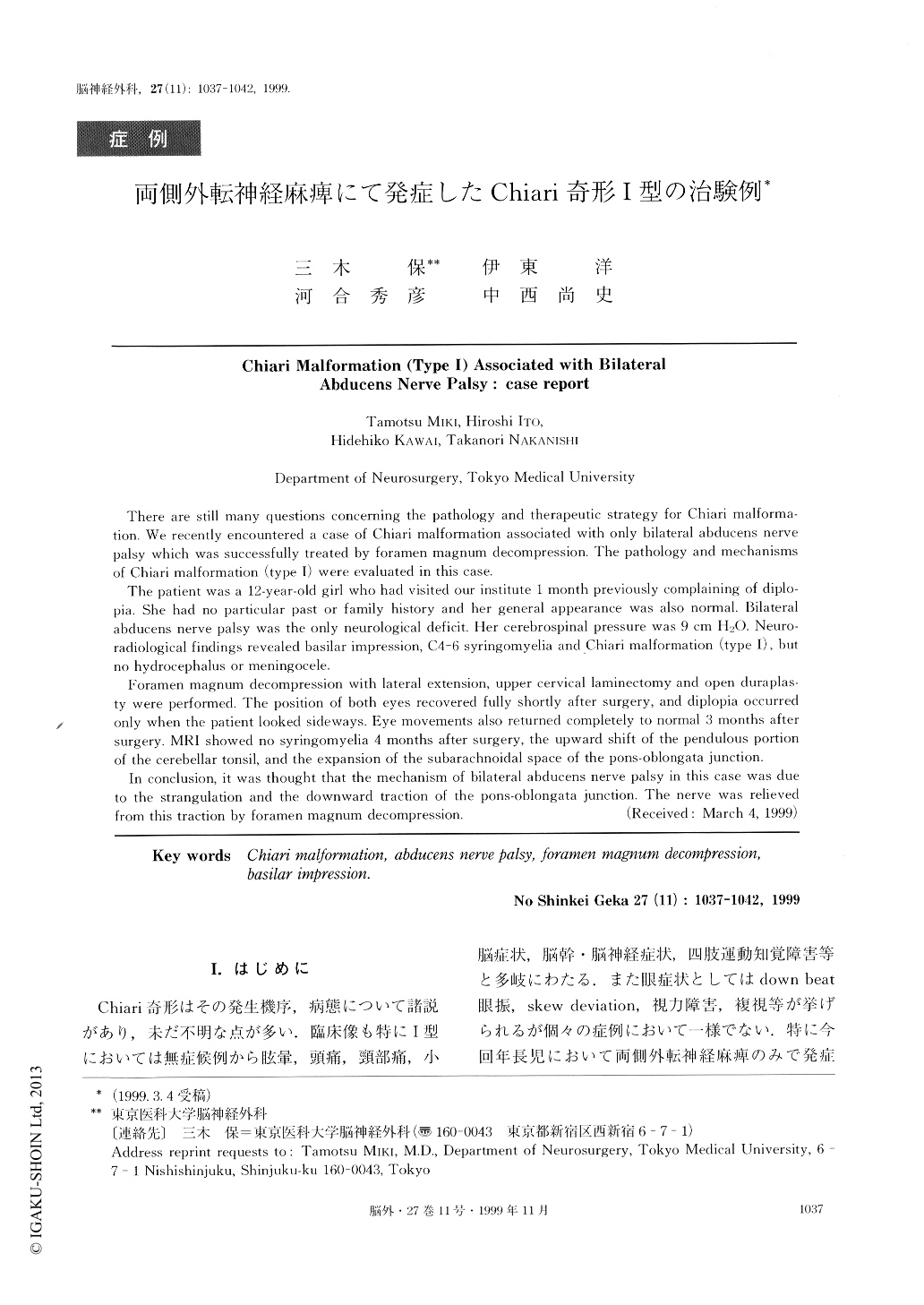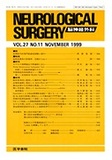Japanese
English
- 有料閲覧
- Abstract 文献概要
- 1ページ目 Look Inside
I.はじめに
Chiari奇形はその発生機序,病態について諸説があり,未だ不明な点が多い.臨床像も特にI型においては無症候例から眩暈,頭痛,頸部痛,小脳症状,脳幹・脳神経症状,四肢運動知覚障害等と多岐にわたる.また眼症状としてはdown beat眼振,skew deviation,視力障害,複視等が挙げられるが個々の症例において一様でない.特に今回年長児において両側外転神経麻痺のみで発症し,大後頭孔減圧術16)にて治癒したChiari奇形I型の症例を経験したので報告する.
There are still many questions concerning the pathology and therapeutic strategy for Chiari malforma-tion. We recently encountered a case of Chiari malformation associated with only bilateral abducens nervepalsy which was successfully treated by foramen magnum decompression. The pathology and mechanismsof Chiari malformation (type I) were evaluated in this case.
The patient was a 12-year-old girl who had visited our institute 1 month previously complaining of diplo-pia. She had no particular past or family history and her general appearance was also normal. Bilateralabducens nerve palsy was the only neurological deficit. Her cerebrospinal pressure was 9 cm H2O. Neuro-radiological findings revealed basilar impression, C4-6 syringomyelia and Chiari malformation (type I), butno hydrocephalus or meningocele.
Foramen magnum decompression with lateral extension, upper cervical laminectomy and open duraplas-ty were performed. The position of both eyes recovered fully shortly after surgery, and diplopia occurredonly when the patient looked sideways. Eye movements also returned completely to normal 3 months aftersurgery. MRI showed no syringomyelia 4 months after surgery, the upward shift of the pendulous portionof the cerebellar tonsil, and the expansion of the subarachnoiclal space of the pons-oblongata junction. In conclusion, it was thought that the mechanism of bilateral abclucens nerve palsy in this case was clueto the strangulation and the downward traction of the pons-oblongata junction. The nerve was relievedfrom this traction by foramen magnum decompression.

Copyright © 1999, Igaku-Shoin Ltd. All rights reserved.


